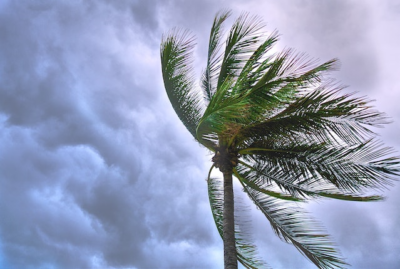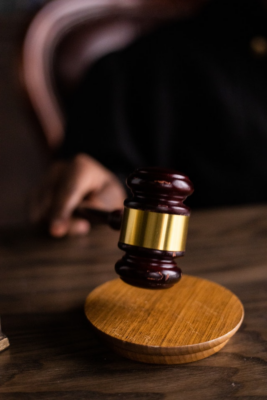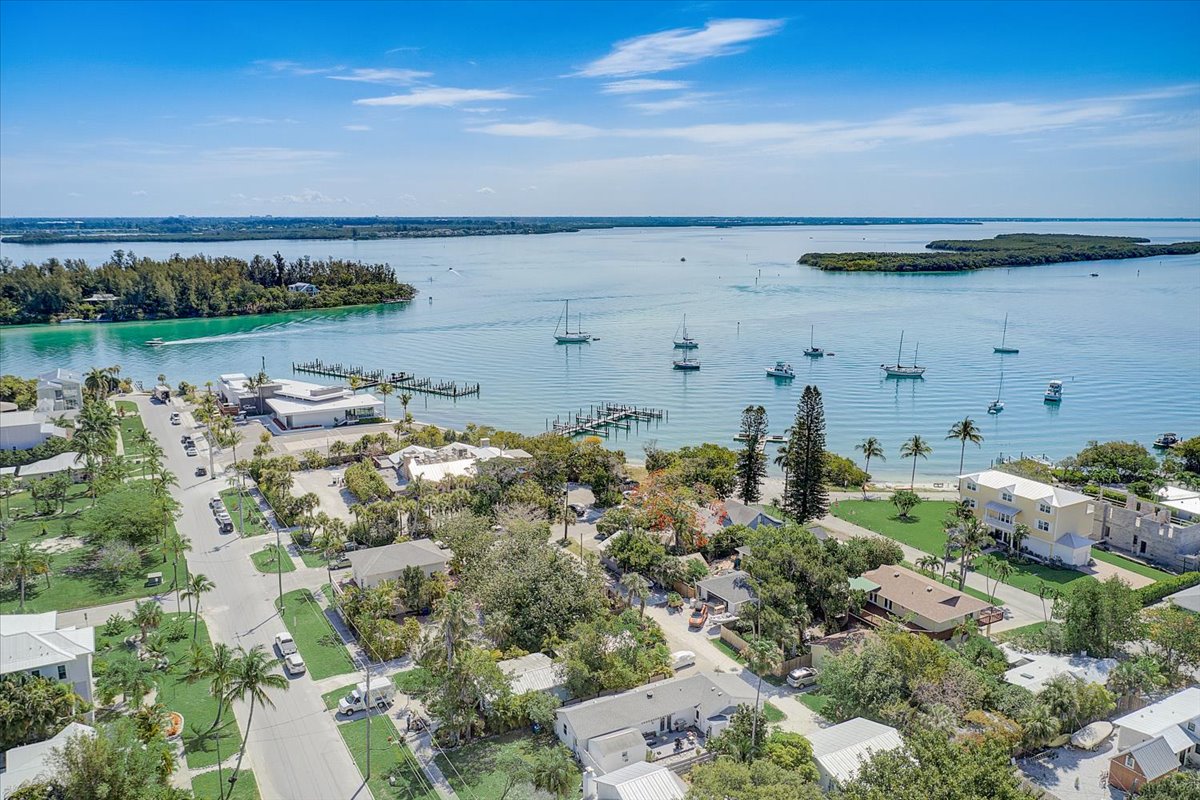Amidst the challenges posed by rising insurance costs, Florida’s real estate market stands resilient, defying the odds and displaying growth, with the small island of Longboat Key leading the way.
Florida, the Sunshine State, continues to shine brightly as a haven of natural beauty, warm weather, and a vibrant lifestyle, attracting real estate investors and homeowners alike. However, amidst the allure of this coastal paradise, a new opportunity for growth has emerged: the rising insurance costs.
As Florida embraces resilience in the face of climate change, the real estate market is adapting and flourishing. In this blog, we will explore the factors behind the rising insurance costs in Florida, how the market is evolving to meet the challenges and highlight Longboat Key as a leading example of optimism and growth amidst these changes.
Understanding the Factors Behind Florida’s Rising Insurance Costs

Photo credit: Suparerg Suksai
Florida’s paradise-like landscapes and warm weather come with unique challenges, especially when it comes to rising insurance costs. Due to Florida’s geographical location, the state faces the intensifying impacts of rising sea levels, hurricanes, and storms which have become recurring threats.
The frequency and severity of natural disasters have led to soaring insurance premiums in recent times. In this section, we will explore the underlying factors contributing to the rising insurance costs in Florida and the collaborative efforts being made to strengthen communities and foster resilience in the face of these challenges.
Climate Change
Florida’s coastal location makes it especially susceptible to the impacts of climate change. Rising sea levels, attributed to global warming, have led to an increased risk of coastal flooding, threatening properties located near the shoreline.
Additionally, the frequency and intensity of Florida hurricanes and storms have risen over the years, resulting in more extensive property damage and a higher frequency of insurance claims. These climate-related events have put immense pressure on insurance companies, leading to a surge in insurance premiums and rising insurance costs across the state.
Catastrophic Events
Over the past decade, Florida has faced several devastating catastrophic events that have significantly impacted its real estate market and made Florida hurricane insurance a trending topic.
Hurricanes like Katrina in 2005, Harvey in 2017, and Ian in 2022 have caused widespread destruction, resulting in massive insurance payouts by providers to cover property damages. Hurricane Ian alone pushed the 2022 losses to $115 billion. The sheer scale of these natural disasters has strained insurance companies’ financial resources, leading to adjustments in premiums to offset potential future losses. Consequently, this contributes to the rising insurance costs.
Reinsurance Costs

Photo credit: Karolina Grabowska
The Florida market is primarily composed of small and medium-sized insurers that exclusively serve the state, stepping in to cover the space left by large national insurers who reduced their presence in Florida due to heightened risk levels.
These smaller insurance companies protect themselves against substantial financial risks by purchasing reinsurance. Reinsurance serves as a safety net for insurers in the event of large-scale claims resulting from catastrophic events. Basically, it is insurance for insurance companies.
However, as the risk of disasters has grown in Florida, the cost of reinsurance has also increased. The higher reinsurance costs are eventually passed on to policyholders through elevated insurance premiums. This ensures insurers remain financially stable and capable of covering potential claims. As a result, this adds to the rising insurance costs.
Legal Factors
 Florida’s legal landscape and its propensity for insurance litigation have contributed to the rising insurance costs. The state’s insurance laws and regulations can be complex, leading to lengthy and expensive claims settlement processes for insurers.
Florida’s legal landscape and its propensity for insurance litigation have contributed to the rising insurance costs. The state’s insurance laws and regulations can be complex, leading to lengthy and expensive claims settlement processes for insurers.
Additionally, a culture of litigation has emerged, driving up legal expenses for insurance providers as they navigate disputes and court proceedings. These costs are subsequently factored into insurance premiums, adding to the overall burden on policyholders.
Recent changes implemented in the final months of 2022 and suggested during the initial quarter of 2023 indicate Florida’s strong commitment to addressing the issues of fraud and misuse within the legal system. These Florida property insurance reforms underscore the state’s determined approach to resolving the insurance crisis, including the rising insurance costs.
Inflation Impact
The surge in inflation has had a direct effect on the costs of raw materials, which in turn has a significant impact on the potential expenses for home repair or replacement in the case of damage.
Across the United States, there has been a notable 19% increase in construction material costs compared to pre-pandemic levels, as highlighted in this report. These heightened costs are another driving factor behind the rising insurance costs in Florida.
The Real Estate Market’s Adaptive Spirit in Florida
Florida’s unique geographic location places it at the forefront of climate change impacts, making it imperative to understand the factors driving the rise in insurance costs. These conditions include sea-level rise, excessive rain, and warming temperatures, which all impact the residents and Florida’s natural environment.
However, instead of being daunted by these challenges, Florida is embracing a proactive approach. For instance, in 2022, a bill was signed allocating $640 million to support communities in their efforts to prepare for challenges like sea level rise, flooding, and more intense storms. The state’s commitment to implementing resilience strategies and sustainable practices is turning adversity into an opportunity for growth.
And in the face of natural disasters, Floridians have shown remarkable resilience and unity. Communities come together to support one another, rebuild homes, and restore livelihoods, showcasing the strength of the state’s spirit during challenging times.
Embracing resilience, the state is also investing in infrastructure upgrades and disaster preparedness to minimize property damage and promote a safer living environment. By focusing on strengthening communities through collaborative efforts and empowering homeowners with access to affordable insurance, Florida’s real estate market is evolving to meet the changing landscape.
This positive outlook is not only ensuring the protection of properties and investments but also inspiring a sense of unity among Floridians as they work together to create a sustainable and prosperous future for the state’s real estate sector.
Finally, the local government is working to find innovative solutions that strike a balance between protecting homeowners and maintaining affordability due to rising insurance costs. By fostering dialogue and collaboration, they aim to ensure that insurance remains accessible and fair for all residents.
Building Resilience through Grants Aimed at Reducing Premiums
Florida’s Safe Home program has the potential to result in reduced home insurance premiums, combating rising insurance costs. The program offers up to $10,000 in matching funds to fortify homes in preparation for the hurricane season.
According to State Chief Financial Officer Jimmy Patronis, the state has allocated $100 million this year to fund enhancements such as impact windows, garage doors, and entrance doors.
The goal is to encourage homeowners to reinforce their residences and adopt windstorm mitigation measures.
Owners of any single-family residential property in Florida are eligible to request a complimentary hurricane inspection for their homes. This assessment will outline necessary enhancements along with the potential insurance savings for each improvement.
The program is designed to offer a ratio of $2 in grant funds for every $1 contributed by the homeowner. The matching amount can go up to $10,000. This means if you invest $10,000 in hurricane preparation repairs, the state will issue you a $10,000 check.
For additional information regarding the Florida Safe Home Program, click here.
Longboat Key’s Resilient Real Estate Market
 Longboat Key has witnessed rising insurance costs but remains a shining example of resilience in Florida’s real estate market.
Longboat Key has witnessed rising insurance costs but remains a shining example of resilience in Florida’s real estate market.
With its picturesque landscapes, pristine beaches, and a strong sense of community, Longboat Key, Florida has long been a sought-after destination for retirees, second-home buyers, and investors seeking a slice of paradise.
Amidst the rising insurance costs in Florida, this idyllic island community has embraced sustainability and innovative practices to thrive in the face of challenges.
Keep reading to find out how the Longboat Key real estate market is redefining the notion of resilience by harmonizing with nature’s beauty, encouraging sustainable growth, and fostering a positive impact on both residents and visitors.
Explore the compelling real estate stats of the Longboat Key region for June 2023
Embracing Nature’s Beauty
Longboat Key’s real estate market recognizes the intrinsic value of its natural surroundings. Instead of overpowering the landscape, developers, and architects work hand in hand with the island’s unique environment to create properties that seamlessly blend into their surroundings.
Low-impact designs, environmentally friendly materials, and strategic planning ensure that buildings coexist harmoniously with the island’s lush greenery, pristine shores, and breathtaking sunsets. This emphasis on preserving nature’s beauty not only enhances the island’s aesthetic appeal but also reinforces its status as a desirable destination for potential homeowners and tourists seeking an authentic and sustainable experience.
Sustainable Tourism and Vacation Rentals
Longboat Key’s thriving tourism industry is built on a foundation of sustainability and eco-consciousness. Vacation rental property owners are taking proactive measures to incorporate green practices into their accommodations, from energy-efficient appliances to recycling initiatives.
Tourists are drawn to the island’s commitment to preserving the environment, knowing that their stay contributes positively to the local community and its efforts toward sustainability. As a result, Longboat Key has cultivated a reputation as a responsible and forward-thinking tourist destination, attracting environmentally conscious travelers seeking to connect with nature and support eco-friendly practices.
Community Unity and Engagement
One of the hallmarks of the Longboat Key real estate market is the strong sense of community unity and engagement. Residents, business owners, and local leaders collaborate to create a shared vision for the island’s growth that prioritizes sustainability, inclusivity, and preserving the island’s unique charm.
Community events, environmental initiatives, and neighborhood associations bring together like-minded individuals dedicated to maintaining Longboat Key’s essence while embracing progressive ideas. This sense of unity not only fosters a strong support system among residents but also enhances the island’s appeal for potential homebuyers, who seek to be part of this vibrant island community.
Forward-Thinking Infrastructure
Longboat Key is at the forefront of adopting forward-thinking infrastructure to withstand the challenges posed by climate change and rising insurance costs. The island invests in flood mitigation strategies, stormwater management systems, and sustainable building codes to reduce the impact of natural disasters on properties.
By proactively addressing these issues, Longboat Key exemplifies how real estate markets can adapt to changing environments while promoting the safety and well-being of its residents.
Preserving Long-Term Value
The emphasis on sustainability and environmentally conscious practices on Longboat Key has a tangible impact on the long-term value of properties. Homes that incorporate green features and adhere to eco-friendly principles tend to appreciate, attracting buyers who prioritize energy efficiency, durability, and a reduced carbon footprint.
This trend positions Longboat Key’s real estate market as a smart investment choice, both for those seeking a permanent residence and for investors seeking rental properties with attractive returns.
Conclusion
Longboat Key’s resilient real estate market demonstrates that embracing nature’s beauty, sustainable growth, and community unity are essential ingredients for thriving in the face of challenges. By harmonizing with its picturesque surroundings, encouraging sustainable tourism, fostering community engagement, and investing in forward-thinking infrastructure, the island has carved a path toward a prosperous and sustainable future.
Amist rising insurance costs, Longboat Key stands as a beacon of hope, inspiring other Florida communities to reimagine resilience as an opportunity for positive growth rather than an obstacle to overcome. As the state’s real estate market continues to evolve, Longboat Key serves as a testament to the power of collaboration, preservation, and embracing nature’s beauty in creating a vibrant and resilient real estate landscape.


